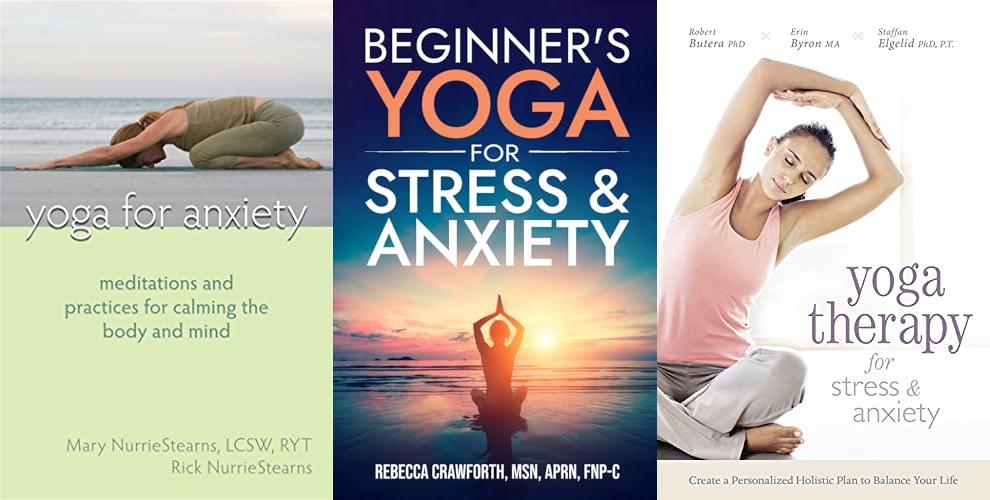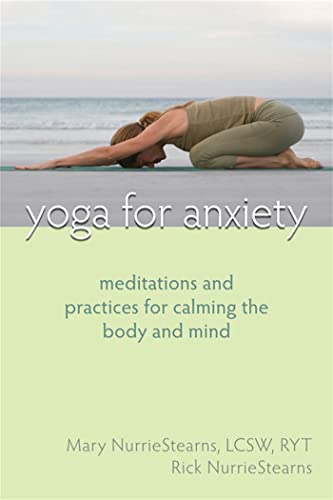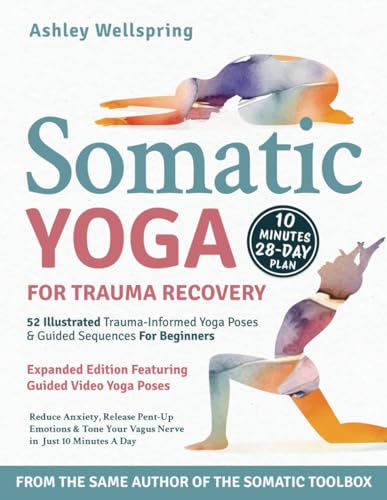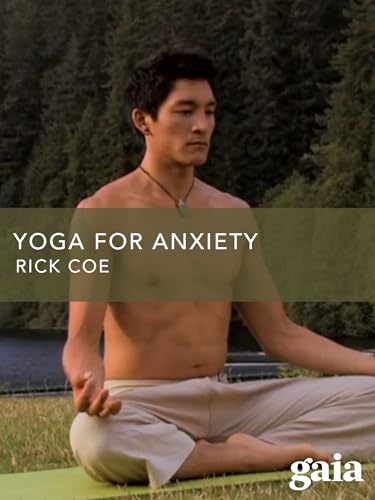Does your mind race like a runaway train? Do you often feel a knot of worry tightening in your chest? You’re not alone. Millions of people deal with anxiety every day, and finding ways to calm that inner storm can feel overwhelming. It’s tough to know where to start when you’re looking for a yoga practice that truly helps ease those anxious feelings.
The world of yoga offers many paths, but not all poses or styles are created equal when it comes to soothing an anxious mind. You might be wondering which poses are best, or if you even need to be flexible to get relief. It’s easy to feel lost in all the information out there.
But what if there was a gentle, effective way to bring peace to your mind and body? In this post, we’ll explore how yoga can be your ally against anxiety. We’ll uncover simple poses and breathing techniques that can help you find a sense of calm, even on your most challenging days. Get ready to discover how yoga can help you breathe easier and feel more grounded.
Our Top 5 Yoga For Anxiety Recommendations at a Glance
Top 5 Yoga For Anxiety Detailed Reviews
1. Yoga for Anxiety: Meditations and Practices for Calming the Body and Mind
Rating: 8.8/10
Feeling stressed or worried? This book, “Yoga for Anxiety: Meditations and Practices for Calming the Body and Mind,” offers a gentle path to peace. It guides you through simple yoga poses and calming breathing exercises. You’ll learn how to quiet your racing thoughts and relax your body. This book is designed to help you feel more in control and less anxious.
What We Like:
- Easy-to-follow instructions make it great for beginners.
- The meditations are short and effective, perfect for busy days.
- It offers a variety of practices, so you can find what works best for you.
- The focus is on gentle movement and deep breathing, which is very soothing.
- It helps you understand the connection between your body and mind.
What Could Be Improved:
- More visual aids like diagrams or photos would be helpful for some poses.
- A companion audio or video guide could enhance the experience.
- Some sections could offer more advanced options for those who practice yoga regularly.
This resource provides practical tools for managing anxiety. It’s a valuable addition for anyone seeking a natural way to find calm.
2. Beginner’s Yoga For Stress & Anxiety
Rating: 8.9/10
Feeling overwhelmed or a little stressed? This “Beginner’s Yoga For Stress & Anxiety” is designed to help you find some calm. It’s made for people who are just starting out with yoga and want to learn simple poses that can make them feel better. You don’t need any special equipment or a lot of space to try these moves. It’s a gentle way to relax your body and mind.
What We Like:
- Easy-to-follow instructions for beginners.
- Focuses on poses that help reduce stress and anxiety.
- Can be done at home with no extra gear needed.
- Promotes relaxation and a sense of peace.
What Could Be Improved:
- More variety in poses could be helpful for continued practice.
- Could include longer guided meditation sessions.
- Visual aids like diagrams or short video clips would enhance learning.
This yoga guide offers a great starting point for anyone looking to manage stress. It’s a simple and accessible way to introduce yourself to the benefits of yoga for your well-being.
3. Yoga Therapy for Stress and Anxiety: Create a Personalized Holistic Plan to Balance Your Life
Rating: 8.9/10
Feeling overwhelmed by stress and anxiety? This book, “Yoga Therapy for Stress and Anxiety: Create a Personalized Holistic Plan to Balance Your Life,” offers a way to find peace. It guides you through creating your own yoga plan. This plan is designed to help you feel more balanced and calm. You’ll learn how to use yoga not just for your body, but for your mind too.
What We Like:
- It helps you build your own yoga routine that fits your needs.
- The book teaches you how yoga can help with stress and anxiety.
- It encourages a whole-body approach to feeling better.
- The steps are easy to follow for beginners.
- You can learn to manage your feelings in a healthy way.
What Could Be Improved:
- Some advanced yoga poses might require additional instruction not found in the book.
- A section with specific yoga sequences for different types of anxiety would be helpful.
This book provides valuable tools for anyone seeking a more peaceful life. It empowers you to take control of your well-being through personalized yoga practices.
4. Somatic Yoga for Trauma Recovery: Reduce Anxiety
Rating: 8.9/10
Feeling overwhelmed, anxious, or like you’re holding onto a lot of stress? This book, “Somatic Yoga for Trauma Recovery,” offers a gentle and effective way to find calm and healing, even if you’ve never done yoga before. It provides simple, illustrated yoga poses and guided routines designed to help you release tension, manage difficult emotions, and support your nervous system. You can start feeling better in just 10 minutes a day.
What We Like:
- Trauma-informed approach: The poses and sequences are created with sensitivity to past trauma, making them safe and empowering for beginners.
- Short daily practice: Committing to just 10 minutes a day makes it easy to build a consistent healing habit.
- Illustrated guidance: With 52 clear, illustrated poses, you’ll know exactly how to do each movement.
- Focus on vagus nerve toning: This is a key benefit for reducing anxiety and promoting relaxation.
- Beginner-friendly: The book is designed for anyone new to yoga or somatic practices.
What Could Be Improved:
- The “N/A” feature is a placeholder and doesn’t offer specific information to critique.
This book is an excellent resource for anyone seeking a gentle, accessible path to emotional and physical well-being. It empowers you to take small, consistent steps towards healing and greater peace.
5. Yoga For Anxiety
Rating: 8.8/10
Feeling stressed or worried? ‘Yoga For Anxiety’ offers a gentle way to find calm. This program guides you through simple yoga poses and breathing exercises designed to ease anxious feelings. It’s like a quiet space you can create for yourself, anytime you need it. You don’t need to be a yoga expert to try it. It focuses on helping you relax your body and mind.
What We Like:
- Easy-to-follow instructions.
- Focuses on breathing to calm nerves.
- Can be done at home.
- Helps you feel more in control.
- Gentle poses are good for beginners.
What Could Be Improved:
- More variety in poses might be nice.
- Some people might want more detailed explanations.
- Could include guided meditations.
This ‘Yoga For Anxiety’ program is a helpful tool for managing everyday worries. It gives you practical ways to find peace when you feel overwhelmed.
Your Guide to Finding the Best Yoga for Anxiety Resources
Feeling stressed or worried? Yoga can help! This guide will show you what to look for when choosing yoga resources designed to ease anxiety. We’ll cover important features, materials, and what makes a yoga experience great.
Key Features to Look For
When you’re searching for yoga for anxiety, keep these features in mind:
- Gentle Poses: Look for classes or programs that focus on slow, calming movements. These poses help relax your body and mind. Avoid anything that feels too strenuous or fast-paced.
- Breathwork (Pranayama): Deep, controlled breathing is a big part of yoga. Good anxiety-focused yoga will teach you specific breathing techniques. These techniques help calm your nervous system.
- Meditation and Mindfulness: Many resources include guided meditations or mindfulness exercises. These help you focus on the present moment and reduce racing thoughts.
- Relaxation Techniques: You’ll want practices that promote deep relaxation. This might include guided body scans or savasana (final relaxation pose) at the end of a session.
- Beginner-Friendly: If you’re new to yoga, choose options that are easy to follow. Clear instructions and modifications for different poses are very helpful.
- Variety of Styles: Some people find restorative yoga best, while others prefer gentle Hatha. A good resource might offer different styles so you can find what works for you.
Important Materials and Formats
Yoga for anxiety comes in many forms. Here are the common ones:
- Online Videos/Courses: These are popular and convenient. You can practice anytime, anywhere. Look for good video and audio quality.
- Apps: Many yoga apps offer guided sessions specifically for anxiety. They often track your progress and offer personalized recommendations.
- Books: Books can provide detailed explanations of poses and breathwork. They are great for learning the theory behind yoga for anxiety.
- In-Person Classes: If you prefer a live instructor and community, in-person classes are a good choice. Make sure the studio or teacher has experience with anxiety.
Factors That Improve or Reduce Quality
What makes a yoga resource excellent or just okay?
- Instructor’s Voice and Tone: A calm, soothing voice makes a big difference. The instructor should sound encouraging and understanding.
- Clear Instructions: You need to understand what to do. Good instruction guides you through each pose and breath without confusion.
- Pacing: Slow and steady is usually best for anxiety. If the pace feels rushed, it might increase your stress.
- Music and Sound: Gentle, calming music can enhance the experience. However, distracting sounds or loud music can be a drawback.
- Length of Sessions: Shorter sessions (10-20 minutes) are good for beginners or busy days. Longer sessions (45-60 minutes) offer deeper relaxation.
- Accessibility: Can you easily access the content? Are the videos downloadable? Is the app user-friendly?
User Experience and Use Cases
How do people use yoga for anxiety, and what’s the experience like?
- Daily Practice: Many people use yoga as a daily tool to manage anxiety. A short morning session can set a calm tone for the day.
- Before Bed: Practicing gentle yoga before sleep can help quiet a busy mind and improve rest.
- During Stressful Moments: Having a few go-to poses or breathing exercises you can do anywhere is incredibly helpful.
- As a Supplement: Yoga can be a great addition to other anxiety management strategies like therapy or medication.
- For Beginners: Yoga for anxiety is often designed for people who have never done yoga before. It makes learning easy and less intimidating.
- For Experienced Yogis: Even experienced practitioners can benefit from yoga specifically tailored to anxiety, offering new ways to find calm.
The goal is to find a resource that makes you feel safe, supported, and more at peace.
Frequently Asked Questions (FAQ) about Yoga for Anxiety
Q: What makes yoga good for anxiety?
A: Yoga helps by calming your nervous system. Gentle movements and deep breathing relax your body. It also helps you focus your mind, which can reduce worrying thoughts.
Q: Do I need special equipment for yoga for anxiety?
A: Usually, a yoga mat is all you need. Some people like using props like blankets or blocks for extra comfort and support, but they aren’t always necessary.
Q: What if I can’t touch my toes or am not flexible?
A: Don’t worry! Yoga for anxiety focuses on how you feel, not how flexible you are. Many poses can be modified. The goal is to relax, not to perform difficult stretches.
Q: How often should I practice yoga for anxiety?
A: Even a few minutes each day can help. Consistency is more important than long sessions. Try to find a routine that fits your life.
Q: Can yoga for anxiety help with panic attacks?
A: Yes, some yoga techniques, especially deep breathing and grounding poses, can help manage symptoms during or after a panic attack.
Q: Is restorative yoga good for anxiety?
A: Restorative yoga is excellent for anxiety. It uses props to support your body in gentle poses for longer periods, promoting deep relaxation.
Q: What’s the difference between yoga for anxiety and regular yoga?
A: Yoga for anxiety usually emphasizes slower movements, longer holds, and more focus on breathwork and relaxation. Regular yoga can sometimes be more physically challenging.
Q: Can I do yoga for anxiety at home?
A: Absolutely! Online videos, apps, and books make it easy to practice yoga for anxiety in the comfort of your own home.
Q: How long does it take to see results from yoga for anxiety?
A: Some people feel calmer right away. Others notice changes over a few weeks of regular practice. Be patient with yourself.
Q: Should I talk to my doctor before starting yoga for anxiety?
A: It’s always a good idea to talk to your doctor, especially if you have anxiety or other health conditions. They can give you personalized advice.
In conclusion, every product has unique features and benefits. We hope this review helps you decide if it meets your needs. An informed choice ensures the best experience.
If you have any questions or feedback, please share them in the comments. Your input helps everyone. Thank you for reading.





